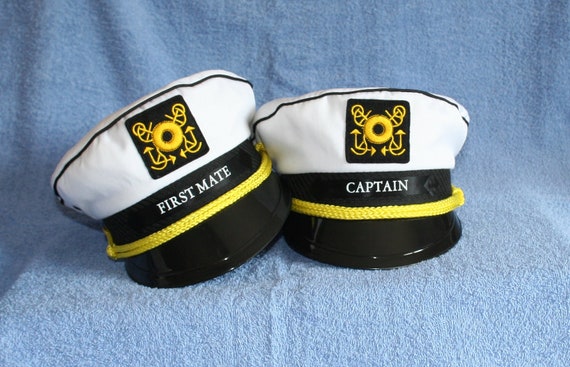

The coloring of the blue is so perfectly reminiscent of the shimmer on the high seas when the sun bounces off the ocean waves.

#Boat captin hat code#
The fire inspector certification is a testament to a firefighter’s commitment and expertise in ensuring community safety through inspections and code enforcement.When it comes to Disney collections, Minnie and Mickey Mouse Ear Headbands are my favorite! Even though I am not able to spend a huge amount of time on Disney cruises, the latest ear release is still going to be a must-have for my collection. Rigorous training and certification are essential for those looking to specialize. As we move into the future, it’s heartening to know that advancements in equipment will continue to bolster the firefighter’s noble quest, marrying courage with cutting-edge technology. While the bravery and skill of a firefighter are unparalleled, their efficacy is significantly amplified by the tools they wield. The rich tapestry of firefighting equipment and gear is a testament to humanity’s commitment to safeguarding its kin. These tools, along with others like the pry bar or sledgehammer, form a formidable arsenal, ensuring no barrier is too great for these heroes. Meanwhile, the Halligan tool, a versatile piece of equipment, can pry open locked doors or breach walls. The fire axe, a symbol of the profession, chops through wooden barriers. That’s where forcible entry tools come in. Obstacles, like locked doors and barred windows, often impede rescue operations. Fire Axes, Halligan Tools, and Other Forcible Entry Tools Not only do they help locate trapped victims but also identify areas most at risk, guiding the firefighting strategy. These cameras, using infrared radiation, illuminate temperature differences. Flames, ironically, are often hidden, masked by thick, black smoke. One of the crowning jewels of modern firefighting tech is the thermal imaging camera. Modern SCBAs feature ergonomic designs, lightweight materials, and alarms to indicate low air levels, underscoring their importance in ensuring a firefighter’s safety amidst the chaos. Breathing clean air in smoke-dense areas is crucial, and these backpack-like devices deliver just that. Breathing Apparatuses: SCBA (Self-Contained Breathing Apparatus)ĭelving deeper into a firefighter’s toolkit, the SCBA stands out. Gloves have evolved to provide dexterity while handling tools, and the boots, reinforced with steel toes and non-slip soles, ensure stability and protection in water-laden or uneven terrains. Helmets, often reflective, protect against falling debris and offer visibility in smoke-filled environments.

The turnout gear, a multi-layered ensemble, combines thermal resistance with flexibility. Protective Clothing: Turnout Gear, Helmets, Gloves, BootsĪ firefighter’s armor, the protective gear, stands between them and potential peril. They come in various types: from fog nozzles, which spread water in a cone, ideal for protecting firefighters, to straight-stream nozzles for direct attacks on flames. Nozzles, the unsung heroes, control water’s force and direction. From the leather models of yesteryears to the robust, lightweight synthetic versions today, hoses ensure a steady water supply. Hoses and NozzlesĮvolution has marked the journey of the humble fire hose. Over the decades, these vehicles have become more specialized, now featuring advanced communication tools and even drones for aerial surveillance. On the other hand, fire engines, equipped with large water tanks, hoses, and pumps, serve as the first line of defense against flames. Fire trucks primarily store ladders and other rescue equipment, playing a pivotal role in high-rise emergencies. While many use ‘fire truck’ and ‘fire engine’ interchangeably, they serve distinct roles.

The roar of a fire truck’s engine signals hope during emergencies.


 0 kommentar(er)
0 kommentar(er)
